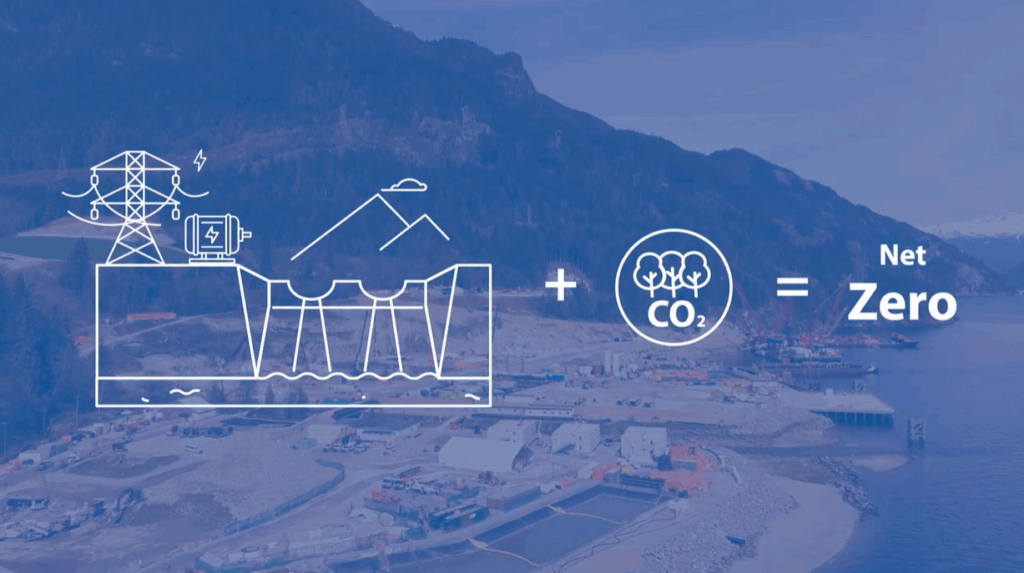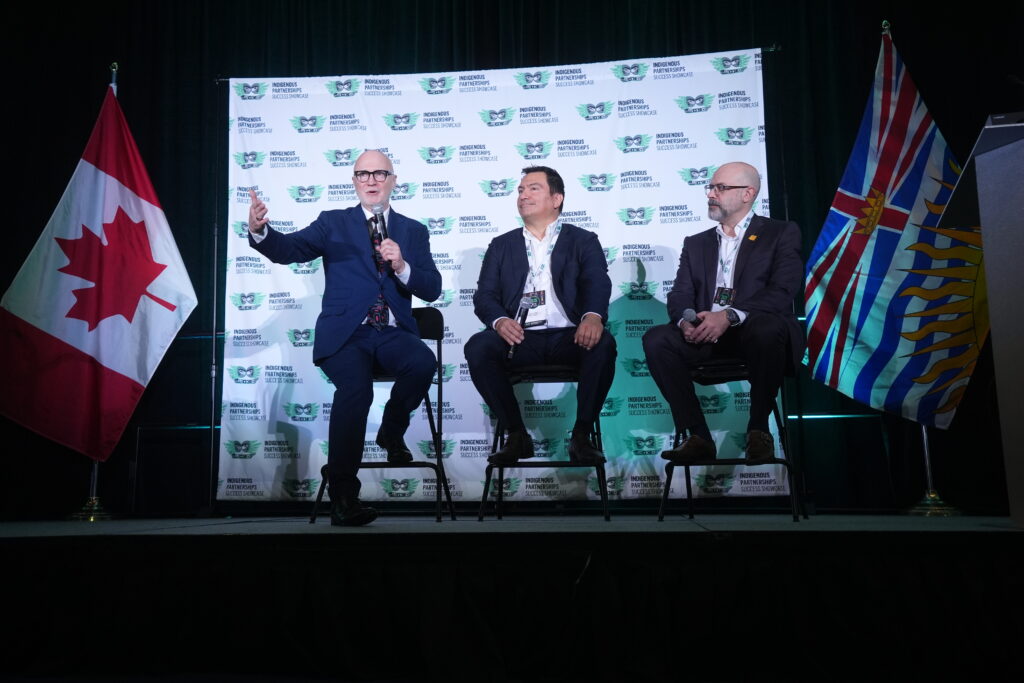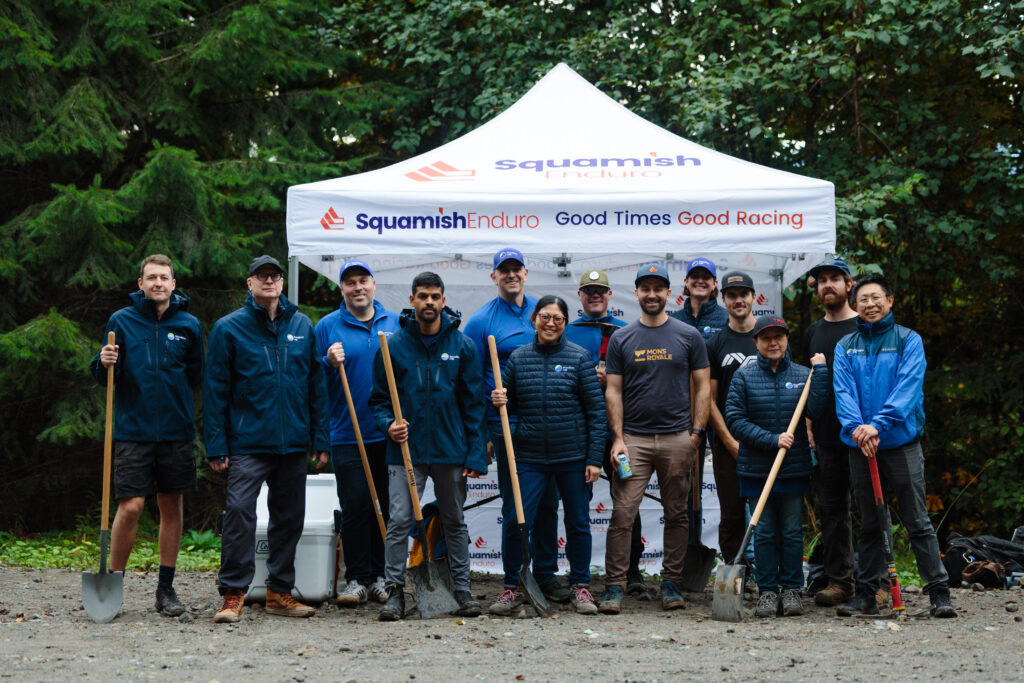News & Insights
Navigating Gender and Cultural Safety in Industry: A Personal Journey and Broader Implications
May 27, 2024
Written by: Toni Dumais, a member of the Woodfibre LNG Gender Safety Advisory Committee
In the resource development industry, many opportunities lie in the service and construction sectors. As an Indigenous woman, my journey in this field has been one of immense challenge but also profound growth and transformation. Today, I want to share a little bit of my story and shed light on how initiatives like Woodfibre LNG ‘s Gender and Cultural Safety Management Plan are paving the way for a more inclusive and equitable future in these sectors.
Statistics Reflecting Disparities
Before envisioning a robust and prosperous future for all, it’s essential to examine the complex tapestry of our workforce’s history and the glaring disparities in participation across different job titles. These discrepancies serve as poignant reminders of the enduring challenges confronted by women and Indigenous communities over decades. According to recent statistics from the 2022 report by Statistics Canada, the numbers paint a vivid picture of this discrepancy:
- In trades, transportation, and equipment operations, men dominate the field with a staggering 92.6 percent participation rate, leaving women with a mere 7.4 percent representation.
- Similarly, in natural resources, agriculture, and related production occupations, men occupy the majority share at 81.8 percent, while women account for only 18.2 percent of the workforce.
- Occupations in manufacturing and utilities follow suit, with men comprising 72.1 percent of the workforce, leaving women with a modest 27.9 percent representation.
- Even in management roles, where strides toward gender equality are often assumed, men hold the lion’s share at 64.6 percent, leaving women with a still significant, yet lesser, 35.4 percent representation.
- Moreover, First Nations people (5.8 percent) and Métis (7.6 percent) were less likely to be in managerial positions compared with non-Indigenous people (9.4 percent). However, Indigenous male managers (53.8 percent) were more likely than their non-Indigenous counterparts (39.2 percent) to be in middle management occupations in trades, transportation, production, and utilities.
- Additionally, First Nations people are about twice as likely to experience unfair treatment and discrimination at work as non-Indigenous people, further exacerbating the challenges they face in the workforce.
- These statistics underscore the significant barriers faced by women and Indigenous peoples in accessing opportunities and attaining higher positions of authority within the industrial sector. It highlights the urgent need for dedicated initiatives to address these gaps by promoting gender, cultural, and Indigenous safety in the workforce.
The Journey Begins
It was against this backdrop that I began my career in trades in the Fort St. John region. Nestled in the heart of northeast BC, Fort St. John is a small community abundant in natural resources and rich in cultural heritage. It is a land of opportunity, where the pulse of the energy sector has beat strongly for generations, driving economic growth and development. Yet, beneath the veneer of prosperity lies a complex tapestry of challenges, particularly for marginalized groups like Indigenous peoples and women.
Navigating the intricacies of the energy sector as an Indigenous woman from Prophet River First Nation came with numerous challenges. From disproving stereotypes to confronting deeply entrenched cultural biases, the journey was tough. However, I viewed each hurdle as an opportunity to drive change. My determination only intensified: I was driven to be a part of the cultural shift within the industry, aiming to enable it to thrive through diverse participation. I envisioned a future where more women and Indigenous peoples could safely experience a sense of accomplishment and prosperity from opportunities without feeling diminished or marginalized.
This vision was deeply rooted in the lived realities of the Treaty 8 First Nation communities in this region. These communities faced disparate conditions and were accustomed to a substandard quality of life. Given that the dominant industry was the energy sector, many community members sought opportunities as entrepreneurs and tradespeople. However, the challenges they faced were immense, leaving them marginalized and competing against each other for a small fraction of the available opportunities.
These challenges underscored the urgent need for change. Access to these opportunities was not just about economic improvement. It meant families could live more comfortably, mothers in violent situations could have the means to leave and provide for their children independently, and young women and youth could have a safe environment to explore their curiosities and build their careers. It was about creating a future where women and Indigenous peoples could move beyond poverty and into prosperity and opportunity.
Pioneering Initiatives
Thankfully, awareness around Equity, Diversity, and Inclusion (EDI) has been rising in Canada, paving the way for more women and minority groups to enter and thrive in the industrial sectors. In British Columbia, significant progress was made on December 16, 2019, when the Environmental Assessment Act, 2018 came into effect. This Act introduced substantial changes for industrial and resource projects, including new rules for Indigenous involvement and increased public participation.
This Act mandates that the Environmental Assessment Office (EAO) in British Columbia support reconciliation with Indigenous peoples. Key provisions include implementing the United Nations Declaration on the Rights of Indigenous Peoples, recognizing Indigenous nations’ jurisdiction and decision-making rights, collaborating with Indigenous nations on project reviews, and acknowledging Indigenous rights as affirmed by section 35 of the Constitution Act, 1982.
The EAO aims to engage Indigenous governments collaboratively in assessing proposed projects and evaluate potentially adverse environmental, economic, social, heritage, and health effects throughout the project lifecycle. The process includes opportunities for all interested parties to be involved, consultations with First Nations, technical studies to identify and examine potential significant adverse effects, strategies to prevent or reduce adverse effects, development of project requirements and conditions that a company must follow if a project is approved, and comprehensive reports summarizing input and findings.
While the Act doesn’t explicitly address gender safety, it emphasizes the importance of cultural safety and acknowledges the adverse effects of development on Indigenous nations, as highlighted in the National Inquiry into Missing and Murdered Indigenous Women and Girls. Ensuring a culturally safe environment within the workforce is crucial for Indigenous participation and collaboration. This shift not only helps address labour shortages but also brings broader perspectives and talents to the industry, enriching it in previously unimagined ways.
Introducing The Gender and Cultural Safety Management Plan
In response to the mandates set forth in the Environmental Assessment Act, 2018, and the concerns raised by local communities, particularly the Squamish Nation , regarding their major project, Woodfibre LNG embarked on a pioneering endeavor. They established a groundbreaking Gender Safety Advisory Committee, a first-of-its-kind group, to oversee and contribute to their unprecedented Gender and Cultural Safety Management Plan. As part of Woodfibre LNG’s comprehensive approach to tackle the obstacles encountered by women and Indigenous communities in industrial environments, this plan stands as a pivotal initiative. Having been privileged to serve on this committee, I leveraged my firsthand experiences from working on major projects in the field. This allowed me to channel my determination towards reshaping a predominantly masculine culture and contribute a distinct perspective.
This plan has been specifically crafted to cultivate a workplace that is both safer and more inclusive. It encompasses a range of comprehensive strategies aimed at preventing gender and cultural-based violence, ensuring that all employees are aware of the importance of respectful behavior and equipped to identify and address inappropriate conduct.
Key components of the plan include establishing a clear worker code of conduct, developing anti-bullying and harassment policies, and providing behavior standards and training. Additionally, the plan offers mental health and addiction awareness programs and violence and harassment prevention training. These measures are designed to ensure that all workers are educated on the importance of respectful behavior and equipped to recognize and report inappropriate conduct, directly addressing the cultural and gender-based challenges historically faced by women and Indigenous peoples in industrial sectors.
In addition to preventative measures, effective response mechanisms are crucial. Woodfibre LNG has set up confidential reporting systems, comprehensive support services, and enhanced support for women and girls. They’ve implemented worker feedback programs and practice adaptive management based on feedback and effectiveness. These initiatives create a safer and more inclusive work environment where everyone feels valued and protected, making it easier for women and Indigenous peoples to participate and thrive.
One of the standout features of their approach is the Floatel. This investment is a testament to their commitment to exceeding industry standards and fostering responsible relationships. The Floatel has been a crucial component in addressing local and First Nation gender and cultural safety concerns, providing a safe and supportive space for workers. By implementing such comprehensive measures, Woodfibre LNG not only addresses the immediate safety and inclusion needs of its workforce but also sets a precedent for other projects to follow, thereby paving the way for broader participation and diversity in industrial sectors.
The Importance of Gender and Cultural Safety
Participating in the development of the Gender and Cultural Safety Management Plan has been an honor. Ensuring gender and cultural safety is not just about creating a better work environment; it is about increasing opportunities for underprivileged communities and unlocking the full potential of our workforce. By fostering diverse, inclusive, and innovative industries, we can drive growth and development in ways previously unimagined. When women and minority groups are given the space to explore their interests and capacities, the entire industry benefits. Diverse perspectives lead to innovative solutions and approaches, enhancing productivity and creativity. Moreover, a diverse and inclusive workforce is better equipped to address the complex challenges facing the industry today.
This plan is part of Woodfibre LNG’s broader effort to address the challenges faced by women and Indigenous peoples in industrial settings. Serving on the committee allowed me to draw from my firsthand experiences working on major projects in the field. By harnessing my determination to help shift a male-dominated culture, I was able to offer a unique perspective to the development of this plan. The comprehensive strategies to prevent gender and cultural-based violence ensure that all workers understand the significance of respectful behavior and possess the tools to recognize and report inappropriate conduct.
Looking Forward
This shift in major project culture signifies a profound transformation in resource development, evolving from a consumer-driven approach to one rooted in social responsibility. This cultural change not only fosters growth and empowerment for everyone involved but also promotes a more inclusive and respectful work environment. With increased awareness, policies, and enforceable action around gender and cultural safety, women and Indigenous people will feel secure in their workplaces, allowing them to pursue careers and aspire to leadership roles with confidence. This sense of security and opportunity will enable them to serve as role models for their children, exemplifying what personal and professional success can look like. As these positive impacts ripple through communities, they can lead to progressive and lasting change, creating a legacy of empowerment and inclusion for future generations.
The journey of being a woman in trades has been one of profound growth and empowerment. Today, with a broader platform, I am dedicated to fostering environments where women and Indigenous people can explore their talents and ambitions safely. As well as supporting communities like the District of Squamish that are new to major project development. The possibilities are just beginning, and I am grateful for every step of this journey. The path ahead is clear: to continue breaking down barriers, supporting each other, and creating safe, inclusive spaces where everyone can thrive.
Wuujo’aasanaláá
This article was originally published on LinkedIn on May 25, 2024. It has been republished here with permission of the author.
Toni Dumais is an Indigenous entrepreneur from Prophet River First Nation which is a Treaty 8 First Nation located in northeast BC. Toni has co-founded and helped to operate fabrication and mechanical construction companies within the service sector for the energy industry in Fort St. John for over two decades. Toni is an Executive MBA graduate from Simon Fraser University Beedie School of Business.


